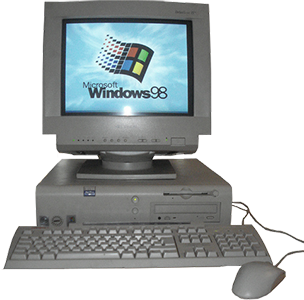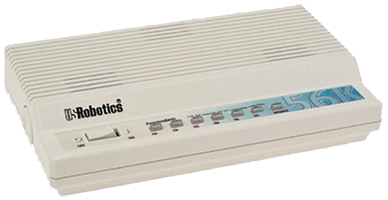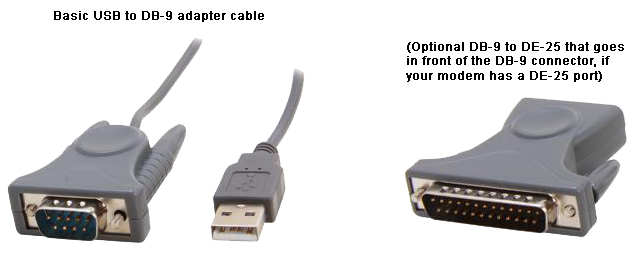 Send files to an old Macintosh with modems
Send files to an old Macintosh with modems
Sending files with serial modems
IntroductionThis is akind in principle to doing it with just a serial cable except that you need more stuff and different software to accomplish the same goal. So if you want something simpler to accomplish file transfer and that is more reliable, I'd recommand you do it with just a regular serial cable. This is specifically for people that want to recreate modem communications. This tutorial is also not ment for all Macs there is, it'll mainly focul on Macs that can run System 6 up to 8 (since this is what I have) and probably 9. If you want to expand it to include a wider range of macs, feel free to do so. Although, it shouldn't be that hard for you to adapt the present one to acheive the same result. I will also focus on doing it with Windows and Linux which is what I have on hand. If you want to add how to do it with a modern iteration of OS X, feel free to do so. So, what is it really ? Well, what I'm refering to as modems are SmartModems. The name comes from Hayes and they are basically small computers that connect to a computer on their serial port and screechs at an other modem thru a landline. When one modem is connected to another, the landline basically becomes a serial link between two computers. With that, you can of course transfer files and this is where this tutorial begins.
What you will need
Preparing the old computerSince we will use ZModem to transfer files, you will first need to send Zterm to your Mac. I know this is a bit of a strange thing to ask, but you already need a way of transfering data to your mac before doing it with modems. There are multiple ways of doing so. You can do with a serial cable as previously said if you have 2 Macs with a serial port and one that cannot read PC floppies. You can use standard PC floppies if your mac has the Super Drive. You can use ZIP disks if you are equiped with those. If you have a CD drive that can read burned discs you could use that too. There is also some modern offers such as the blueSCSI to emulate a hard disk in SCSI or the Floppy Emu if you want a floppy emulator. You may now copy the software to your HDD and see if it works. You may need some testing to see what version works for your old mac, for example, version 1.0.1 works on my Mac SE with system 7.0.1 but not the 1.1b7.
Preparing the new computerOn windows, I will use HyperTerminal. The windows XP version of the software still works on windows 10, so you will need to get it from the internet or, if you have a windows XP machine at hand, you can simply copy HyperTerminal AND it's associated files to your windows 10 machine. You can also use any other terminal emulator that supports Zmodem if you whish to. On Linux, I will use two pieces of software. One is called minicom and the other is lrzsz. I cannot cover every Linux distrib there is, but they should be in the repos of most of the popuar distros. If you have problems, Google should have your answers. I will not cover modern Macs here, since I don't have any to test it, but there should be a way of installing minicom and lrzsz thru the command line.
Preparing the ATAI will not go into too much details here, since there is already a great tutorial here. There is also a small list of ATAs that should work in this tutorial. ATAs are cheap and redilly available, which makes them a good candidate for such an experiment. Beware though that they are cheap analog to digital and digital to analog converters and as such, you may not get the fastest connection possible nor get a connection everytime you will make a call. If you want reliability in connections and the fastest speeds always, you will need to get a good PBX ! Once the ATA is configured, you can plug telephones in to test if you can call the other end and vice versa.
Connecting the modemsIf you tought that setting up the ATA was tricky, you haven't played with modems ! Since modems can be set-up in a variety of ways. There can be a lot of reasons as to why your modem may not work. If you have problems, I recommand you read the documentation for it, since each maker made their own extended command set, you'll need it to be able to check the configuration of your modem and adapt it to your needs. To do anything with the modem, you first need to set it up.
Setting up the software and the modemSetting up the software is the easy part, so let's start with that on the mac. Start Zterm, go into Settings --> Connection. Choose a datarate, I'd recomand either 38400 or 19200. A mac SE cannot do more than ~24kbps anyway. If you have a faster mac, then doing 57600 or the speed above might be also an option if your modem supports it. If you have problems sending files though, I'd recommand trying slower speeds. Set the data bit to 8. Set the parity to none and the stop bit to 1. Since we will be using hardware flow control, activate the Hardware handshake option. Let's setup the new computer. I will show how to do so on Linux, since on windows you just enter the same parameters in Hyperterminal, but in a window with a mouse. First, install minicom with your package manager of your distrib and install also lrzsz. Once this is done, type sudo minicom -s. A window will appear with options. Go to the third option and press enter. Set the serial port that shall be used by pressing a, in my case it's /dev/ttyUSB0. If you happen to have a real serial port, it should be ttyS0 and press enter when finished. Press e and then press d to set the speed at 38400 and then press q to set the other parameters, which are 8-N-1, same parameters as on Zterm, then press enter. Then, press f to set hardware flow control to on and then press enter. You should be back in the first window that you saw earlier. Now, go to the 6th option and press enter and go to the 8th option. You should now be in minicom and connected to the modem, if you want to know if the modem is responding (don't forget to turn it on), just type at, the modem should respond OK (if it doesn't, no worries, we'll look at some options to make it do things). If your modem has LEDs to show some status, the DTR/TR one should be on. Now onto the modem. I will warn you, as I did before, that since smartmodems can be configured in a lot of different ways, yours may not be configured to perform what we'll do and I am not an expert either, so I wont be able to explain everything. Lets start with what happened when you typed at earlier. If nothing appeared, it probably means that the modem is in none echo mode, so we'll type some commands to try to make it show OK when you type at. You could also tell me that at isn't even shown when you type it. That means that the modem doesn't echoes back what you type. To change this behaviour, type ate1. You should now be able to see what you type. Now that you can see what you type, to be able to have the modem show OK after at we'll need to add two commands. First type atv1 then atq0, note that you can also combine them both into atv1q0 or at v1 q0. If that does not work, just try as it was first shown. Also, as a preventative measure, type atx4, this will show messages when connecting or receiving calls. Take note that you can type either in all caps or in all lower case, but not a combination of both. Do the same for the other modem, if necessary. One other thing that could need be configured is the hardware flow control. Some modems have it either disabled by default or have had it disabled in the setup they where used in their previous life. If you have such problems as loss of packets that needs to be resent when you are sending data faster than what the line can do for example : 38400bps serial link over a 2400bps modem link, then you probably need to activate hardware flow control. Read the documentation of your modem to see how to change this. IMPORTANT : I have seen that old Macs with the DIN serial port seems to not really support RTS (ready to send) and they just drop DTR (data terminal ready) when the hardware flow control asks to stop sending data, which in turn, closes the connection between the modems. You should check your documentation to set the modem on the Mac so that it doesn't hangs up when DTR is droped.
ConclusionNow that everything is set up, you should be able to just launch the software and then call the other computer with atdtphonenumberhere, press enter and do a Zmodem transfer over a phone line like they did in the old BBS days ! That's pretty much all you can do to transfer files. You may also use the terminal emulator to communicate remotely with a Linux computer in TTY mode for example, but this is a subject for another tutorial. |
|









